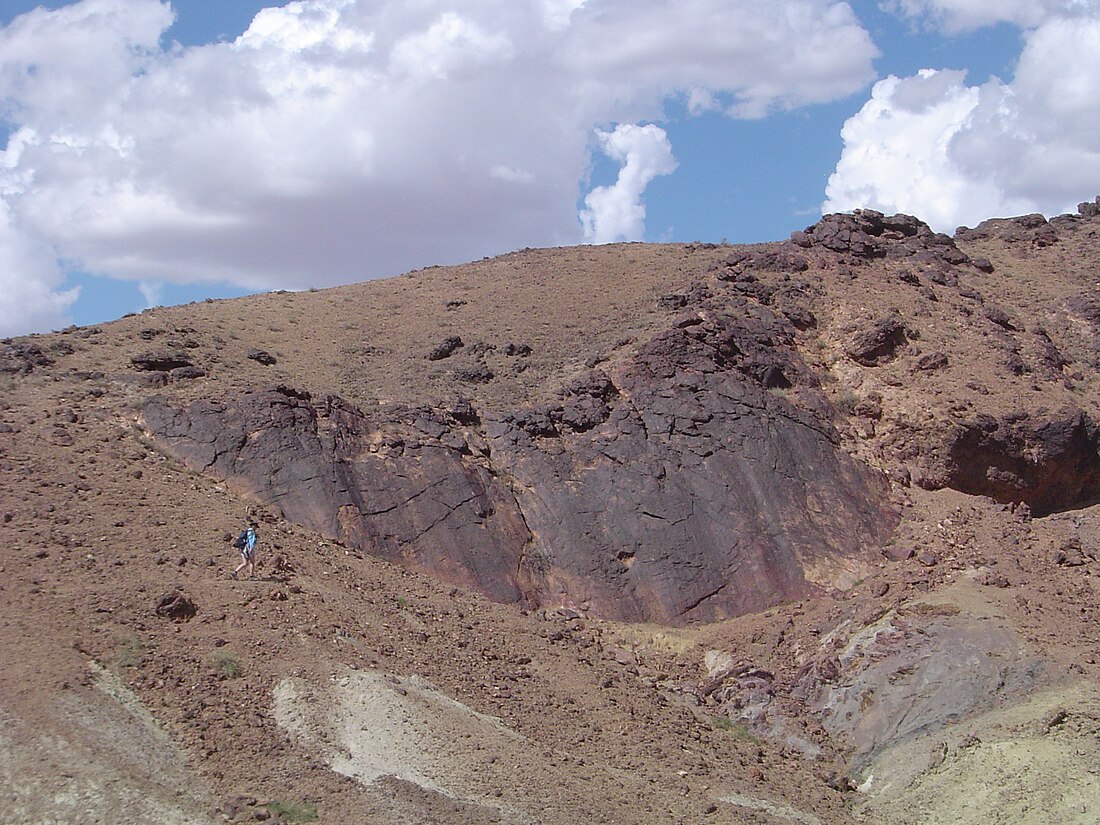Fault scarp
Small vertical offset on the ground surface From Wikipedia, the free encyclopedia
A fault scarp is a small step-like offset of the ground surface in which one side of a fault has shifted vertically in relation to the other.[1][2] The topographic expression of fault scarps results from the differential erosion of rocks of contrasting resistance and the displacement of land surface by movement along the fault.[3][4] Differential movement and erosion may occur either along older inactive geologic faults, or recent active faults.[5][6][7]
An eroded fault scarp from the Gobi Desert of Mongolia (left) and at Borah Peak in Idaho. The latter fault scarp (white line at the base of the tan hills) was formed in the 1983 Borah Peak earthquake
Characteristics
Summarize
Perspective
Fault scarps often involve zones of highly fractured rock and discontinuities of hard and weak consistencies of rock. Bluffs can form from upthrown blocks and can be very steep, as in the case of Pakistan's coastal cliffs.[8] The height of the scarp formation tends to be defined in terms of the vertical displacement along the fault.[9] Active scarp faults may reflect rapid tectonic displacement[10] and can be caused by any type of fault including strike-slip faults.[11] Vertical displacement of ten meters may occur in fault scarps in volcanic bedrock, but is usually the result of multiple episodic movements of 5 to 10 meters per tectonic event.[12][13]

Due to the dramatic uplift along the fault, which exposes its surface, the fault scarp is very prone to erosion. This is especially true if the material being uplifted consists of unconsolidated sediment.[14] Weathering, mass wasting, and water runoff can soon wear down these bluffs, sometimes resulting in V-shaped valleys along runoff channels. Adjacent V-shaped valley formations give the remaining fault spurs a very triangular shape. This formation is known as a triangular facet; however, this landform is not limited to fault scarps.[15]
Fault scarps may vary in size from a few centimeters to many meters.[16] Fault-line scarps are typically formed due to the differential erosion of weaker rocks along a fault. Such erosion, occurring over long time periods, may shift a physical cliff far from the actual fault location, which may be buried beneath a talus, alluvial fan or filled-in valley sediments. It may therefore be difficult to distinguish between fault scarps and fault-line scarps.[17]
Examples
- The Teton Range in Wyoming is an example of an active fault scarp. The dramatic topography of the Tetons is due to geologically recent activity on the Teton Fault.[18]
- Fault scarps in Motosu, Japan, created by the 1891 Mino–Owari earthquake.[19]
- The fault scarps bounding the East African Rift Valley.[20]
- The fault scarps bounding the Rio Grande Rift in New Mexico.[21]
- The Bree fault scarp of the Roer Valley in northeast Belgium[22]
- The underwater Malta escarpment marks the eastern end of the Malta Plateau continental shelf and runs southwards from the eastern coasts from Sicily and the Malta towards the Medina Seamounts near the African coast.[23][24]
References
Wikiwand - on
Seamless Wikipedia browsing. On steroids.


